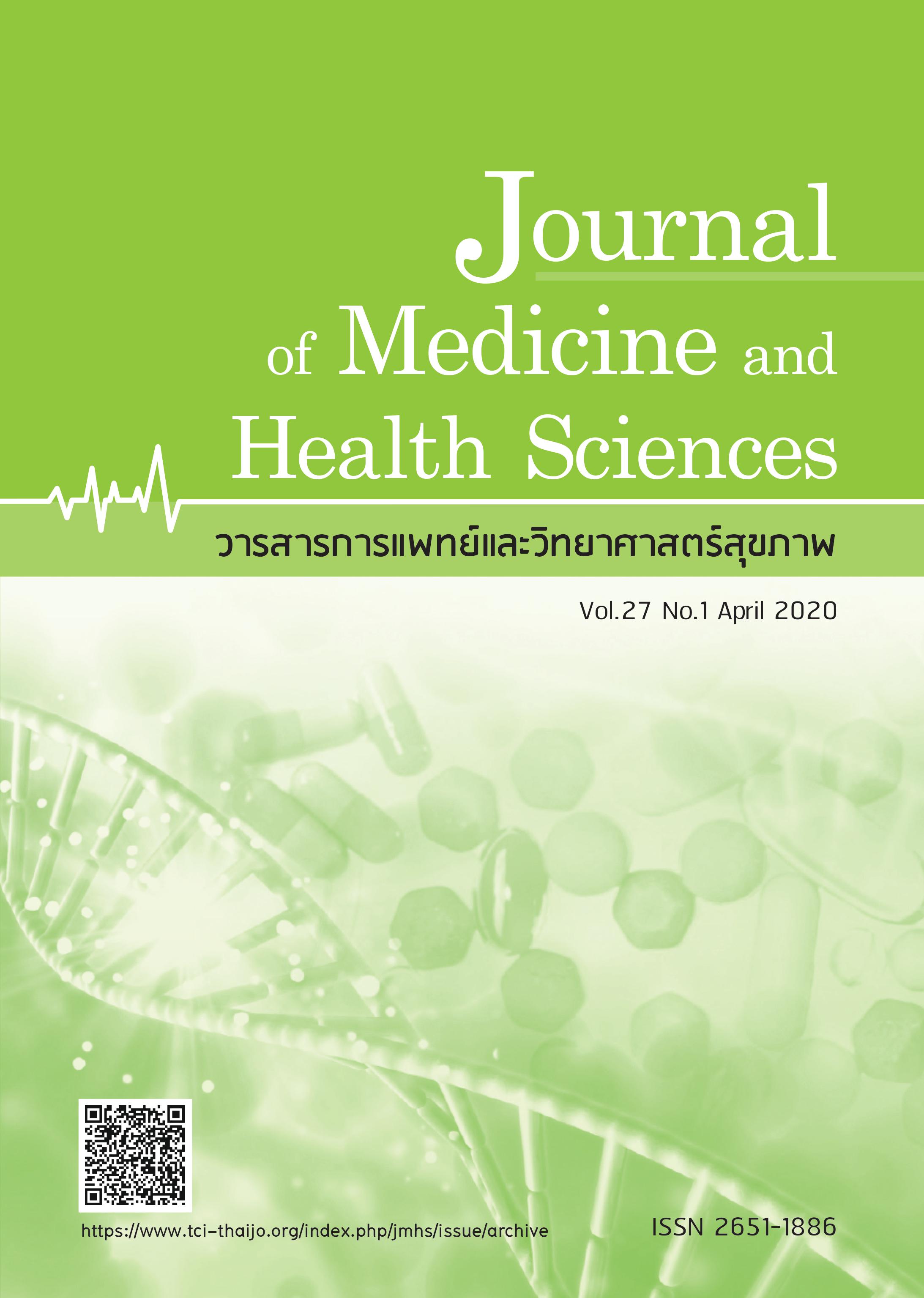Flipped classroom teaching model
Keywords:
flipped classroom, medical education, 21 century skills, life long learningAbstract
บทคัดย่อ
การสอนแบบห้องเรียนกลับด้าน (flipped classroom) เป็นเทคนิคการสอนรูปแบบใหม่ ที่มีการปรับเปลี่ยนวิธีการจัดการสอนจากการสอนเนื้อหาความรู้ในห้องเรียนมาเป็นการมอบหมายให้ผู้เรียนศึกษาด้วยตนเองที่บ้านหรือนอกเวลาเรียน และใช้เวลาในห้องเรียนในการจัดกระบวนการเรียนรู้ที่ผู้เรียนได้ลงมือกระทำ ข้อมูลงานวิจัย พบว่า การสอนแบบห้องเรียนกลับด้านส่งผลดีต่อผลสัมฤทธิ์การเรียนรู้ ความพึงพอใจต่อรูปแบบการจัดการสอน ปฏิสัมพันธ์ระหว่างผู้เรียนและผู้สอน และการใช้เวลาในห้องเรียนอย่างมีประสิทธิภาพอย่างไรก็ตาม ปัญหาที่พบบ่อยในการสอนแบบห้องเรียนกลับด้านคือ ผู้เรียนไม่เตรียมตัวศึกษาข้อมูลก่อนเข้าเรียน ส่งผลให้ไม่สามารถอภิปรายแลกเปลี่ยนความรู้ในห้องเรียนได้อย่างมีประสิทธิภาพ
Abstract
The flipped classroom is a new teaching method, in which activities traditionally conducted in the classroom become home activities, and activities normally constituting homework become classroom activities. At home, students learned knowledge contents through various kind of materials. During the classroom hour, teacher used active learning strategies and technique to address student learning gap and enhance competency. Previous research reported the advantage of flipped classroom on student learning outcomes, student satisfaction, student-instructor interaction, and effective classroom time. However, the major challenge in flipped classroom model was inadequate student preparation prior to class that result in ineffective classroom participation.
References
2. Akcayir G, Akcayir M. The flipped classroom:A review of its advantages and challenges.Comput Educ 2018;126(1):334-45.
3. Battaglia D, Kaya T. How Flipping YourFirst-Year Digital Circuits Course Positively Affects Student Perceptions and Learning.Int J Eng Edu 2015;126:334-45.
4. Smith J. Student attitudes toward flipping the general chemistry classroom. Chem Educ Res Pract 2013;14(4):607-14.
5. Gilboy MB, Heinerichs S, Pazzaglia G.Enhancing student engagement using the flipped classroom. J Nutr Educ Behav 2015;47(1):109-114. doi: 10.1016/j.jneb.2014.08.008.
6. Liu KJ, Tkachenko EA, Waldman A, et al. A video-based, flipped classroom,simulation curriculum for dermatologic surgery: A prospective, multi-institution study J Am Acad Dermatol 2019;81(6):1271-76.
7. Jensen JL, Kummer TA, d M Godoy PD.Improvements from a flipped classroom may simply be the fruits of active learning.CBE Life Sci Educ 2015;14(1):1-12. doi: 10.1187/cbe.14-08-0129.
8. He W, Holton A, Farkas G, et al. The effects of flipped instruction on out-ofclass study time, exam performance,and student perceptions. Learn Instruc 2016;45:61-71
9. Al-Zahrani A M. From passive to active: The impact of the flipped classroom through social learning platforms on higher education students’ creative thinking.Br J Educ Technol 2015;46(6):1133-1148.doi:10.1111/bjet.12353.
10. Sayeski KL, Hamilton-Jones B, Oh S. The efficacy of IRIS STAR legacy modules under different instructional conditions.Teach Educ Spec Educ 2015;38(4):291-305.
11. Chen Y, Wang Y, Kinshuk, et al. Is flip enough? Or should we use the flipped model instead? Comput Educ 2014;79:16-27.
12. Wanner T, Palmer E. Personalising learning: Exploring student and teacher perceptions about flexible learning and assessment in a flipped university course.Comput Educ 2015;88:354-69.
13. Hermsen JL, Mokadam NA, Verrier ED. Flipping the Classroom. Thorac Surg Clin 2019;29(3):279-84.



